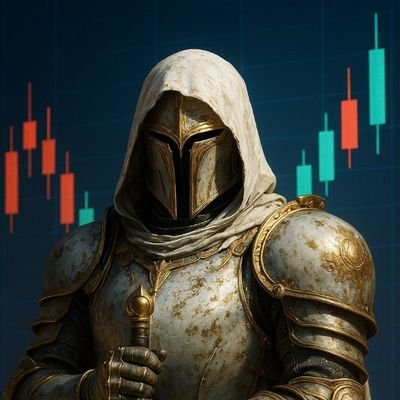Preț MantraDAO
în EUR

Despre MantraDAO
Limitarea răspunderii
OKX nu furnizează recomandări privind investițiile sau activele. Trebuie să analizați cu atenție dacă să tranzacționați sau să dețineți activele digitale prin prisma stării dvs. financiare. Consultați-vă cu un profesionist în domeniul juridic / fiscal / de investiții pentru întrebări despre circumstanțele dumneavoastră specifice. Pentru detalii suplimentare, consultați Condițiile de utilizare și Avertizarea de risc. Prin utilizarea paginii web terțe („TPW”), acceptați că orice utilizare a unei TPW va fi supusă oricăror și guvernată de orice condiții pentru TPW. Exceptând mențiunile exprese în scris, OKX și afiliații săi („OKX”) nu sunt în niciun fel asociați cu proprietarul sau operatorul TPW. Sunteți de acord că OKX nu este responsabilă sau răspunzătoare pentru nicio pierdere, daună și orice alte consecințe care decurg din utilizarea de către dumneavoastră a unei TPW. Țineți cont că utilizarea TPW poate duce la pierderea sau diminuarea activelor dumneavoastră. Este posibil ca produsul să nu fie disponibil în toate jurisdicțiile.
Performanța prețului pentru MantraDAO
MantraDAO pe rețelele sociale
Ghiduri

Creați un cont de OKX gratuit.
Finanțați-vă contul.
Alegeți-vă cripto.
Întrebări frecvente MantraDAO
MANTRA este o platformă DeFi care pune accent pe guvernanță, staking, creditare și multe altele. Funcționează pe cadrul Substrate construit de Parity pentru Polkadot, cu scopul de a crea un ecosistem financiar descentralizat.
MANTRA folosește o guvernanță transparentă și oferă diverse servicii DAO și DeFi, inclusiv managementul trezoreriei, platforma de lansare, guvernanța DAO, stakingul, creditarea și multe altele, implicând utilizatorii în luarea deciziilor și în activitățile financiare.
Puteți cumpăra tokenuri OM pe o serie de piețe de tranzacționare spot diferite. Un exemplu este bursa cripto OKX, care oferăOM/USDTpereche de tranzacționare.
Dacă doriți să achiziționați OM cu monede fiduciare, OKX are Cumpărare Expres opțiunea care vă este la îndemână. Platforma vă permite să utilizațiConversiefuncție de conversie a deținerilor în exces în OM. Alternativ, dacă doriți să convertiți OM în monedă fiduciară, puteți folosiCalculator cripto OKXpentru a verifica ratele de conversie.
Aflați mai multe despre MantraDAO
Urmărind descentralizarea adevărată, construirea comunității este un element esențial. Această înțelegere a stimulat aparițiaorganizații autonome descentralizate (DAO). Un model al acestui concept este MANTRA DAO, o componentă integrantă a ecosistemului MANTRA.
Ce este MANTRA
MANTRA (cunoscut anterior ca MANTRA DAO) este un guvernat de comunitatefinanțe descentralizate (DeFi)platformă specializată în mizare, creditare șiguvernanță. Funcționează ca un hub în care comunitatea nu doar influențează schimbările viitoare ale proiectului prin votare, ci câștigă și recompense. Funcționând pe substratul de paritate pentruPolkadotecosistemul, MANTRA DAO are drept scop înființarea unui ecosistem comunitar bazat pe transparență, transparent și descentralizat pentru Web3 pentru a împuternici persoanele cu control financiar și creștere de avere colectivă.
Echipa MANTRA
MANTRA a fost fondată de Will Corkin, John Patrick Mullin și Robigo Quan Miranda. Will Corkin este un antreprenor blockchain și fintech cu un istoric semnificativ în piețele de criptomonede și titluri de valoare tokenizate. John Patrick Mullin oferă experiență ca educator și specialist în tokenizare în Hong Kong. Rigo Miranda, un fost bancar de investiții bazat pe Hong Kong, a trecut la tehnologii emergente și a fondat Moon Street Ventures.
Cum funcționează MANTRA
Elementul central al abordării MANTRA reprezintă un angajament dedicat pentru implicarea comunității. Această dedicare se reflectă într-un mecanism de guvernanță transparent care susține procesul decizional unitar și în colaborare. În acest cadru, platforma oferă o gamă diversă de servicii DAO și DeFi, proiectate cu atenție pentru a spori securitatea, prezentând în același timp moduri de câștig. Aceste servicii includ aspecte esențiale, precum gestionarea trezoreriei, Launchpad și controlul emiterilor, guvernanța DAO și granturi, printre alte oferte.
Tokenul de guvernanță MANTRA: OM
MANTRA DAO și-a introdus tokenul nativ, OM, la jumătatea lunii august 2020. Are o ofertă maximă de 888.888 de tokenuri OM, echivalentul ofertei totale. OM are diverse aplicații, cum ar fi mizarea, yield farming, creditare și debitare, guvernanță și vot.
Distribuție OM
OM este distribuit în modul următor:
- 8,5 procente alocate publicului printr-o vânzare publică
- 9 procente distribuite prin intermediul unei vânzări private
- 17,5% reținute de echipă și consilieri
- 30 de procente desemnate pentru recompense de staking
- 12,5 procente alocate pentru recomandări
- 10 procente alocate în rezervă
- 12,5 procente au fost puse deoparte pentru granturi
Raportare privind gazele cu efect de seră






